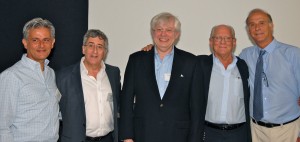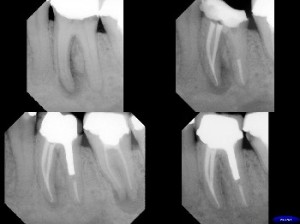Since the mid 1990s, dentists have been required to base their clinical judgements on up-to-date, gold-standard research. We may take evidence-based dentistry for granted nowadays, but when it was introduced in the latter half of the 20th century, it seemed to herald a new era. Sadly, in a few areas of health, there are still small but vocal groups who prefer to peddle their own extreme theories bearing little relation to the most recent or valid research.
Take for instance the ideas of Weston A Price who lived from 1870 to 1948. His name continues to live on because it suits a very few extremists to continue to propagate his more absurd notions.
Price was a Canadian born dentist who became very interested in nutrition and its relation to dental and physical health. A lot of us would support some of his views – that processed foods, refined sweeteners and additives are best avoided.
Where I, and the rest of the dental profession, part company with Price is on his focal infection theory. He believed that a localized site of infection could disseminate micro-organisms around the body and cause systemic disease. He believed that a tooth that had been endodontically treated would harbour bacteria that could, in time, cause serious illness. His idea of a cure? Extraction of the tooth.
The so-called research he carried out was seriously flawed. Price may have been taken seriously in his time but he was discredited by the 1940s. Today, we can dismiss his theory as ridiculous because it’s not based upon the kind of rigorous, scientific research expected of us.
Unfortunately, there are new generations of extremists who take ideas and attempt to breathe new validity into them. A recent online American site which a worried patient wanted my views on carried a report about Price which had more than 70,000 views and 500 plus comments.
This scare-mongering article describes a root-treated tooth as a “silent incubator “ for highly toxic anaerobic bacteria and suggests that they cause, arthritis, heart attack, kidney disease and more.
In the face of such nonsense, the dental profession needs to do its best to explain the difference between an out-of-date theory and properly conducted research.
We have support from an important quarter: the General Dental Council. I remember reading a landmark judgement dating back some seven or eight years after a dentist was found guilty of serious professional misconduct on a variety of charges relating to an alternative approach to the treatment of one patient. This is what was said to the offending dentist: “Your approach seems to have been to adopt a philosophy and then to seize on all the available evidence which appeared to support it without regard to quality. That is a highly unsatisfactory basis for treatment.”
The very clear expectation of the GDC is that registrants should know how to identify gold standard research.
Unfortunately, we can’t control what our patients find on the internet and no-one seems to have any jurisdiction over what is uploaded there. When I do have a patient who has been exposed to misleading or worrying information, I refer them to the website of the American Association of Endodontists. Their Fact Sheet on the subject is evidence-based and very reassuring: http://www.aae.org/uploadedfiles/publications_and_research/guidelines_and_position_statements/focalinfection.pdf
Read More




